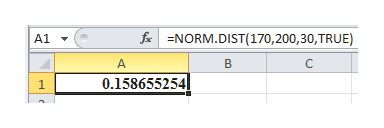A taxicab company in New York City analyzed the daily number of miles driven by each of its drivers. It found the average distance was 200 mi with a standard deviation of 30 mi. Assuming a normal distribution, what prediction can we make about the percentage of drivers who will log in either more than 260 mi or less than 170 mi?
Continuous Probability Distributions
Probability distributions are of two types, which are continuous probability distributions and discrete probability distributions. A continuous probability distribution contains an infinite number of values. For example, if time is infinite: you could count from 0 to a trillion seconds, billion seconds, so on indefinitely. A discrete probability distribution consists of only a countable set of possible values.
Normal Distribution
Suppose we had to design a bathroom weighing scale, how would we decide what should be the range of the weighing machine? Would we take the highest recorded human weight in history and use that as the upper limit for our weighing scale? This may not be a great idea as the sensitivity of the scale would get reduced if the range is too large. At the same time, if we keep the upper limit too low, it may not be usable for a large percentage of the population!
A taxicab company in New York City analyzed the daily number of miles driven by each of its drivers. It found the average distance was 200 mi with a standard deviation of 30 mi. Assuming a
It is given that the number of miles driven is normally distributed with mean 200 miles and standard deviation is 30 miles.
Probability that a randomly selected driver drives more than 260 can be obtained by entering the formula “=1-NORM.DIST(260,200,30,TRUE)” in EXCEL.

From the above output,

Probability that a randomly selected driver drives less than 170 can be obtained by entering the formula “=NORM.DIST(170,200,30,TRUE)” in EXCEL.

Step by step
Solved in 6 steps with 5 images




